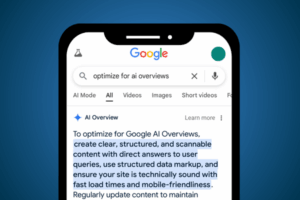Last year, at Google Marketing Live 2023, Google announced the newest evolution of the Google Merchant Center, aptly named Google Merchant Center Next. Google Merchant Center Next (GMC Next) is touted as being a simpler, easier-to-use interface that provides merchants with new features and support not currently available in the Google Merchant Center Classic version. Onboarding is meant to be easier, and insights are intended to be more actionable.
In a recent Google Ads Academy webinar, it was announced that Merchant Center Next invitations would be rolling out through the end of July, with all merchants being added to Merchant Center Next by the end of September. Until that September switchover date, Merchants will have the option to switch back and forth as desired.
ROI Revolution has recently upgraded many of our merchants’ accounts into GMC Next and has pinpointed the important differences in the interfaces, functionality, and programs included. We will outline the key learnings throughout this article and note what’s missing from GMC Next that we feel is essential to optimal product feed management.
Jump to each topic using the links below:
- What’s New/Different?
- GMC Next
- GMC Classic
- What’s the Same or Similar?
- What’s Brand New?
- Next Steps
- ICYMI: Recent blog posts
- Select item and image to edit/optimize
- Describe the product and submit a prompt or leverage the selection of inspiring themes provided by Google for generative AI edits to be made
- Allow Google to edit the background or change the resolution
- Review changes and accept or reject them
- With ROI Revolution, your product feed will be managed by in-house experts.
- We understand the value of optimization and make it a priority.
- We are extremely skilled with data processes and offer creative solutions to complex issues.
- We have a system to implement, evaluate, report, and log results of tests to build insights using the RevolutionSuite® technology created by our in-house development team.
- We implement safeguards to maintain your data quality and processes to proactively check accuracy.
What’s New/Different?
Interface Navigation – Of course, the most noticeable changes aren’t necessarily functionality changes, they are adjustments to the navigation and interface. While a lot of the capabilities and features are similar or the same to the GMC Classic, many have moved, shifted under different settings options or headers, or been renamed.
Overview Page – The primary home page for GMC has experienced drastic changes. The most noticeable include a prominently featured wholistic product performance trend chart and a product status card instead of multiple separate diagnostic trend charts.
Product Sources – In early July 2024, Google rolled out “Advanced Data Sources” as an Add-On. Before this update, merchants were only able to manage Primary feeds. Until July 2024, there wasn’t a way to utilize Feed Rules, Supplemental Feeds, or Local Inventory/Product Inventory Feeds, but now there is. In the same way that you can add a feed via file upload, Google Sheets, or API in the Classic version, you can now do so in GMC Next, just in a separate tab.
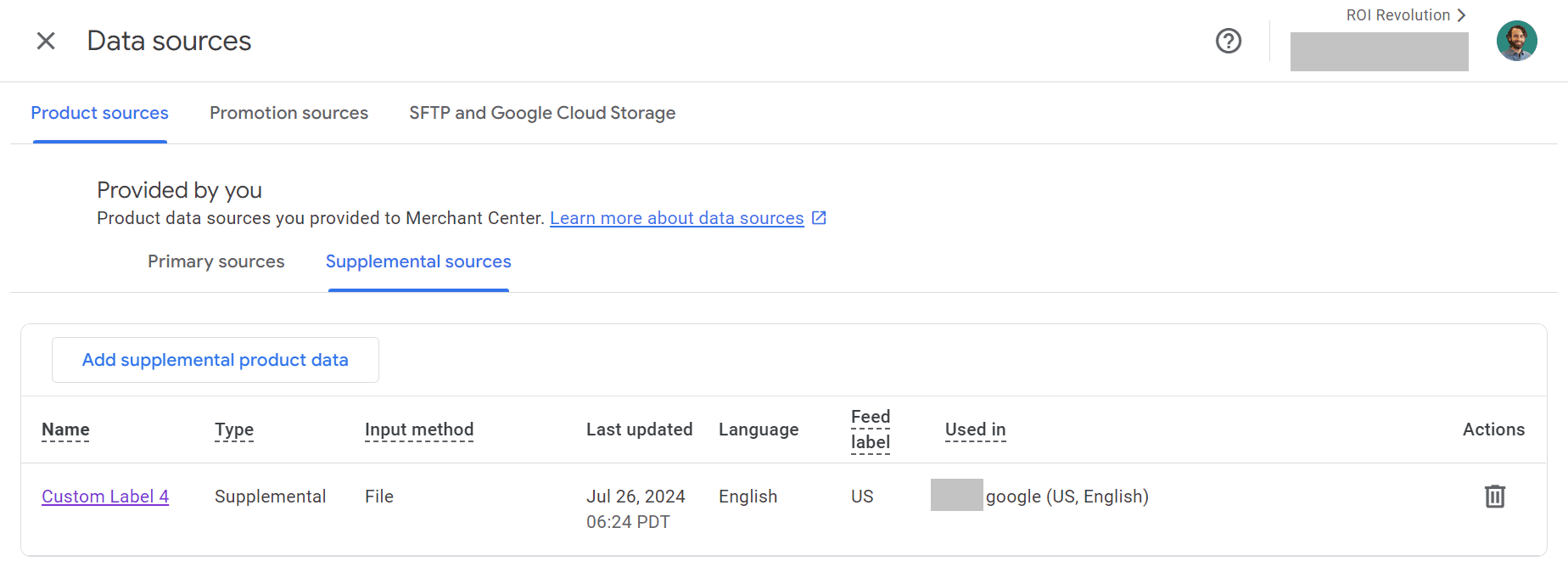
Product Studio – Both in Google Marketing Live 2023 and 2024, Google has leaned heavily into encouraging merchants to leverage AI- generated imagery and creative to enhance their product images. Product Studio in GMC Next is the new feature that allows merchants to do the following:
Note: Images that are generated or modified using Product Studio will be available as a secondary image after they are created. To set them as the primary image, you’ll need to do so within the Product Details section under “Manage Images”, where you can pin the new image as the main product image.
Product List & Product Details – The newest iteration of the Product details page in GMC Next is more compact and digestible than the GMC Classic version. Classic Product details require lots of scrolling to see all the information about each Item ID since it’s more vertically focused and includes tech details, product status, and performance trends all on one page. With GMC Next, those features are separated into different tabs and focus on product information and an ad preview (which is new!).
The GMC Next version also highlights the custom label values each item ID is assigned and makes the “Edit product” setting more accessible at the top. One current issue (as of mid-July 2024) is that when you look at the “Traffic” tab within the Product details, nothing is shown. Even for products that have impression and click history, the “Traffic” tab showcases an empty trendline. We expect Google to remedy this bug soon!
GMC Next
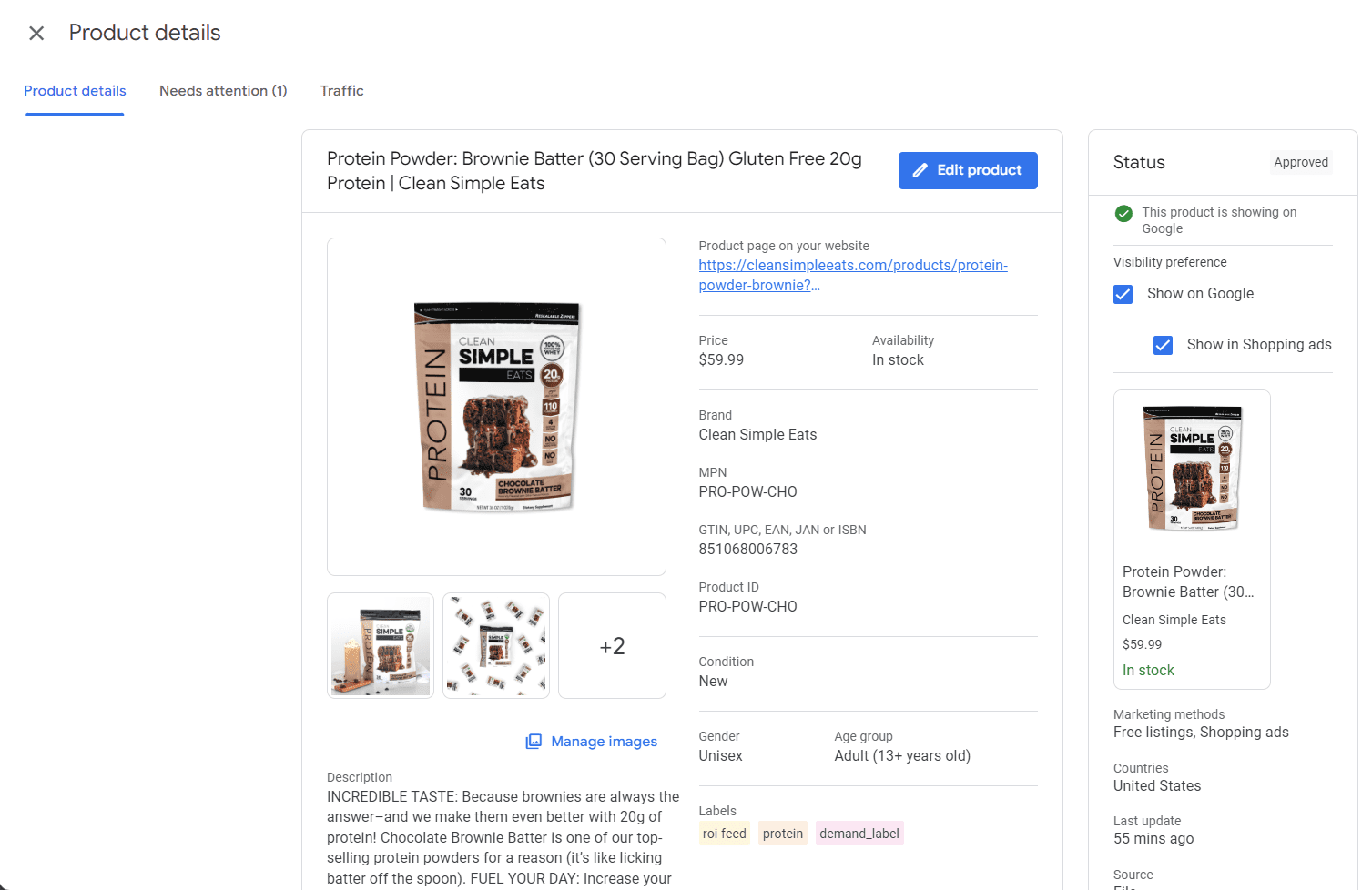
GMC Classic
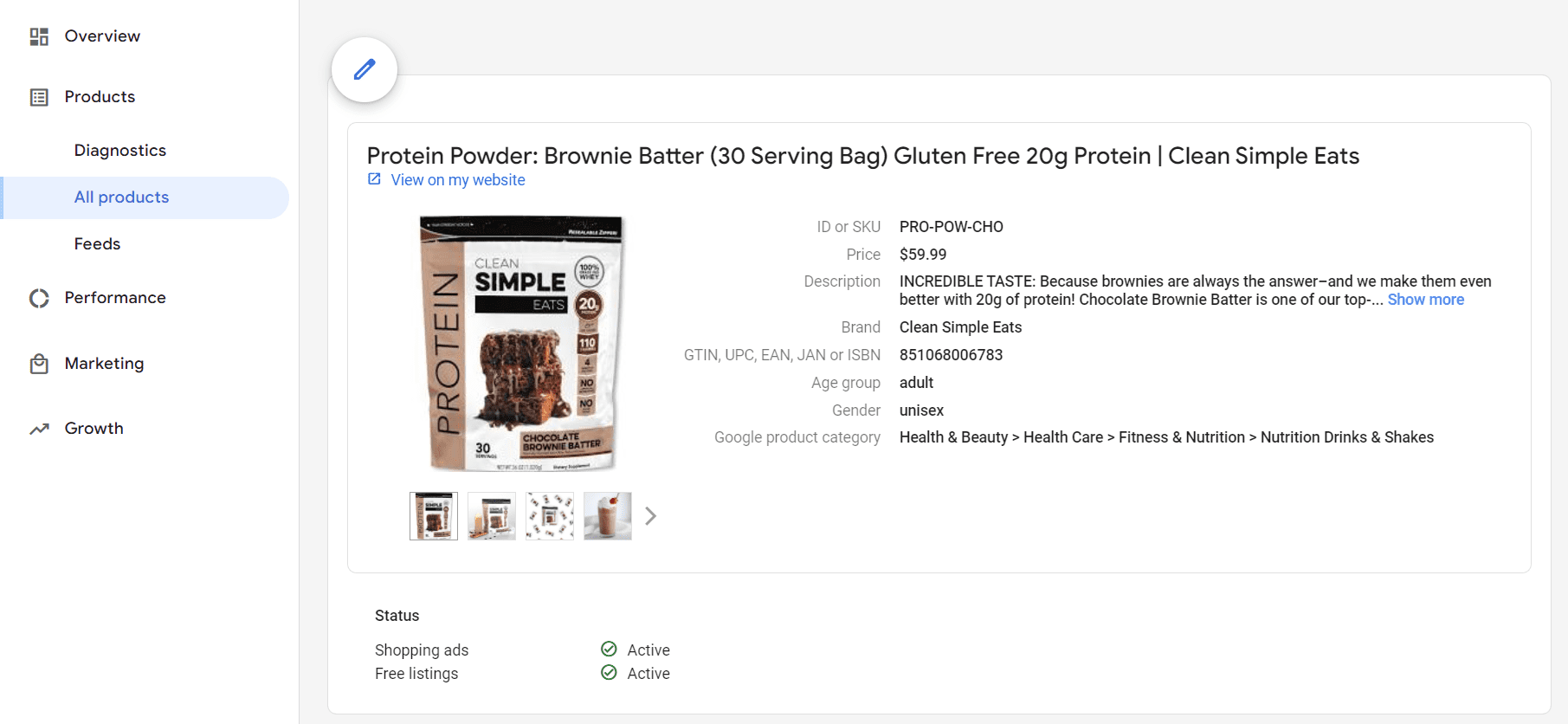
Product Diagnostics – ROI’s noted biggest difference, and one that most impacts a merchant or feed manager’s day-to-day workflow, is the change to Diagnostics. While we believe that the GMC Next interface is cleaner, it does minimize the visualization efforts that Google has in GMC Classic to call out items with warnings and disapproval trends over time.
Another important change here is how the diagnostics and product status defaults to a wholistic view across all marketing methods over the channel specific views in Merchant Center Classic. At a top level, products will now show as “Limited” if they are disapproved in 1+ channel, and only show as “Not approved” if they are disapproved across all channels. You can filter to a specific marketing method within the “Needs Attention” section if you want to home in on a specific placement.
Addressing and resolving product-level issues is a primary concern for product feed and Merchant Center managers, the Classic version puts a focus on Diagnostics as a settings dropdown with a visible trendline of product health, whereas GMC Next requires users to navigate to a “Needs Attention” tab and then another click into a “View History” underlined hyperlink.
The GMC Next version of the Needs Attention menu option provides more actionable directions. There are direct links for how to fix specific product-level disapprovals and warnings, as well as more helpful information on what is causing the item issues.
“Programs,” now called “Add-Ons – Within Merchant Center Classic, all the additional add-ons and different value-adding programs were located within an option on the main overview tab called “Programs”. A lot of these same programs have been shifted into the Settings menu (cog icon in top right) under an option called “Add-Ons”. One substantial change here is that, like mentioned above, to utilize multiple supplemental feeds or create feed rules, you’ll need to opt into the Advanced data source management “Add-On” if you weren’t previously leveraging supplemental feeds.
What’s the Same or Similar?
Product Performance & Analytics – Over the last 2 years, Google has gradually rolled out more comprehensive product traffic performance information in the GMC Classic, and that has carried over into GMC Next! Traffic across Free Listings and Ads, competitive visibility, popular products reports, and pricing comparison tools are all still available in GMC Next, but just named differently.
Shipping & Returns – While the location of these settings has changed, they still function similarly between GMC Next and Classic. Google made the setup process a bit easier with more sectioned and gradual steps when creating or editing a configuration.
Shopping Experience Scorecard – This feature has essentially remained the exact same from Classic to Next! The same metrics/criteria exist, the SES has just been moved into the “Your Business” section in GMC Next instead of nested underneath the Growth section in Classic. The menu option is now just called “Store Quality”.
Promotions – For merchants that have on-going promotions that may need adjusting or reviewing, the defaulted ‘Promotion status: all’ view is a minor change that helps quickly review which promotions have expired already along with any potentially rejected promotions that need your attention.
Other highly used features/settings that have essentially remained the same (except for location in the GMC Next interface) are Conversion Settings, Customer Reviews, and Custom Reports. Other “admin”-type settings like user access, preferences, notifications, and general account settings, have also shifted location or changed naming convention slightly, but functionality remains the same.
What’s Brand New?
Though the updates haven’t been game-changing yet, at Google Marketing Live 2024, Google did hint at a few new features that we expect to be helpful. A new “Generate Insights” feature was teased in a product showcase that utilizes AI to provide merchants information to help them better understand their product performance and provide recommendations for ways to improve traffic. If merchants or feed managers don’t know the best way to leverage the data they are passing to the GMC and its impact on PMax campaign performance, this feature may be extremely beneficial!

In the same GML2024 presentation, Google briefly glossed over a new tab that was shown in the Performance section of GMC Next called “Audience”. This feature is likely to give merchants performance/traffic insights into predetermined audiences, which is something that has never been available within the Google Merchant Center before.
We also have seen a brand new, unannounced upgrade to the Promotions set up for just a few accounts that helps promotions be significantly more targeted and intentional by allowing merchants to target specific audiences (likely associated with the new audiences feature that’s upcoming), geos, and purchaser types like never before. This new update will make promotions more dynamic and give merchants the ability to focus on what their marketing goals are. We’re excited to see more about this feature once it’s officially announced and rolled out to more merchants. As of now, this looks to be available within both GMC Classic and Next.
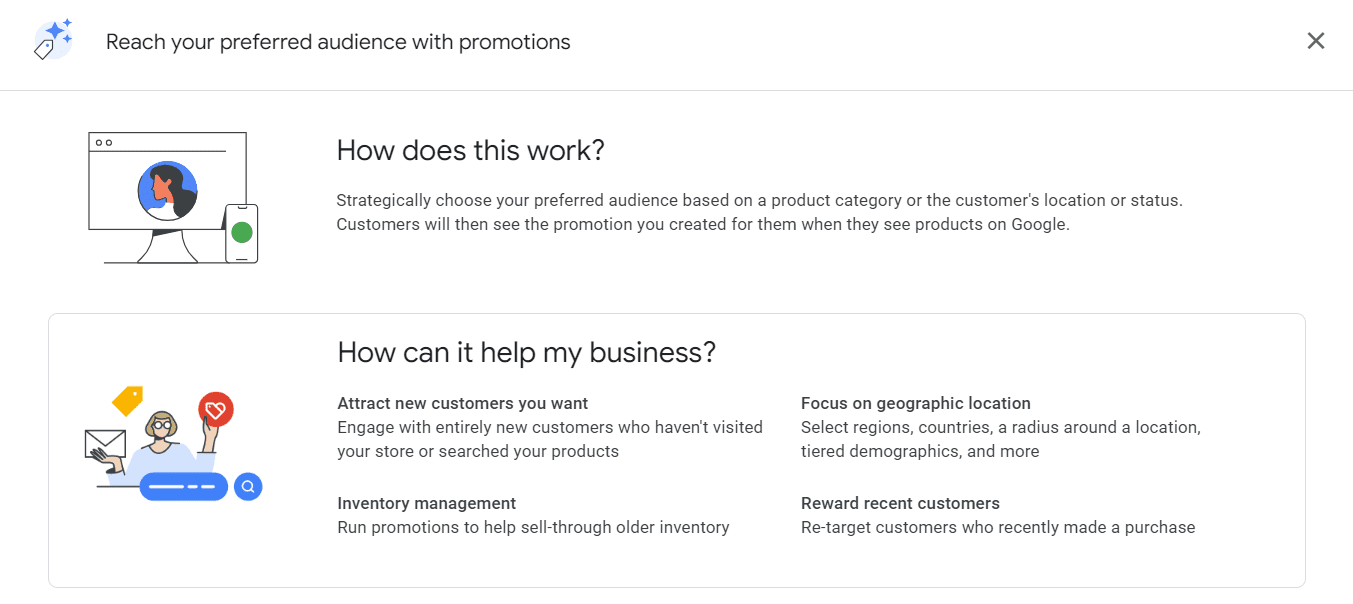
Ultimately, while interface and minor feature changes are exciting, we don’t currently feel that Google Merchant Center Next is a giant leap forward for product feed managers and merchants who use the program often…at least with what’s been rolled out so far. We will see what 2024 brings as we continue through the second half of the year and we’re hopeful that Google continues to innovate and provide helpful, actionable features along the way.
Tying it all together: Product feed optimization strategy
Having a product feed optimization strategy can help your business stay profitable, and a successful transition to and adoption of GMC Next should be part of that strategy in your near-term future.
ROI Revolution has recently upgraded many of our merchants’ accounts into GMC Next and early adoption and learnings are key to making your marketing strategy as successful as it can possibly be. The product feeds experts at ROI Revolution are always testing new ways to help brands grow profitably – and we do it better than any other agency.
What’s the ROI Revolution difference?
There may be growth opportunities waiting for your brand under the surface. Don’t let them go to waste! To explore the revenue growth your business could discover through product feed optimization, send a message to our team today.
ICYMI: Recent Resources
Want to catch up on recent product feeds news?






